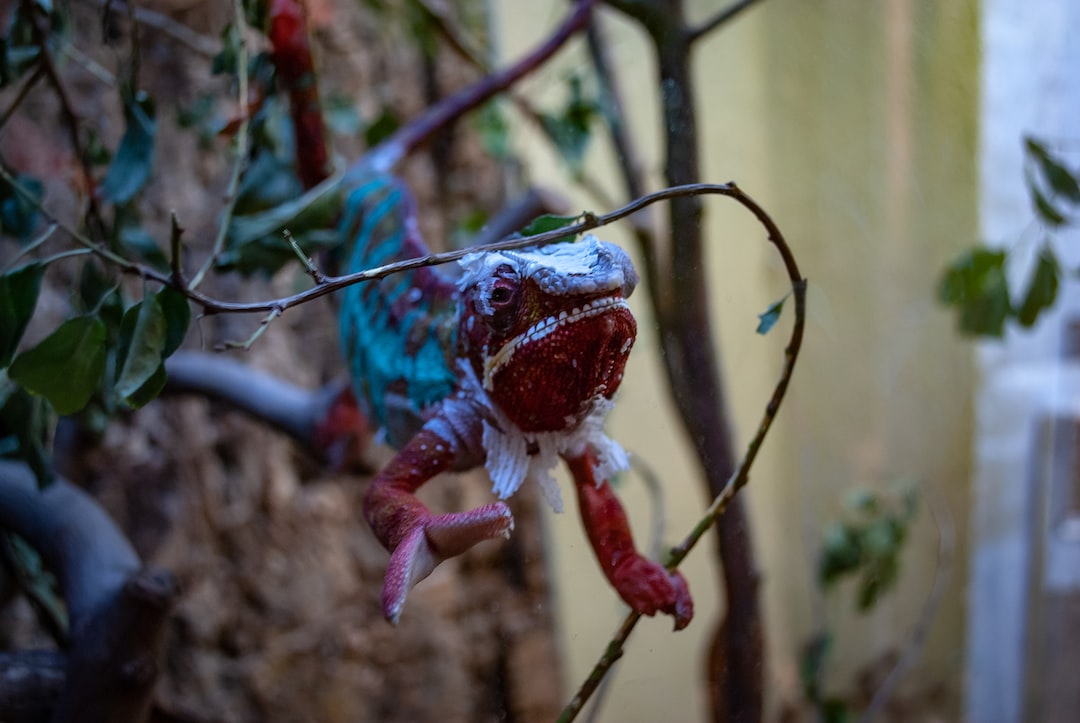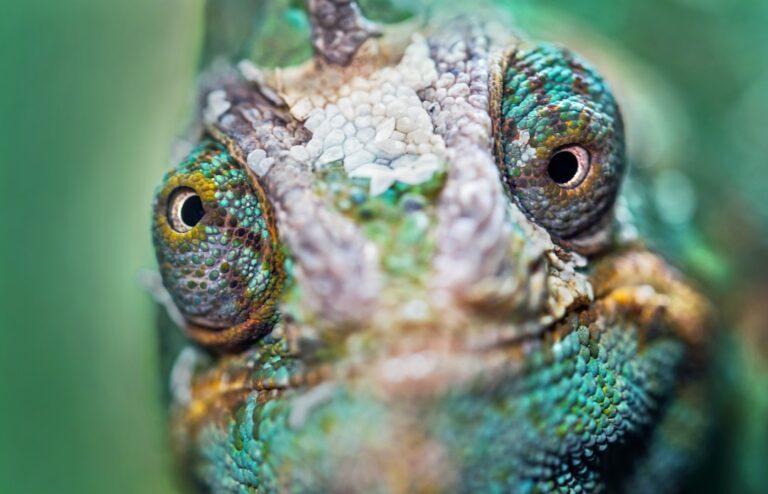Can Chameleons Live Together?
Chameleons are fascinating reptiles known for their ability to change color and blend into their surroundings. They are native to Africa, Madagascar, and parts of Asia and are highly adaptable to various environments. Chameleons are solitary creatures by nature, and their social behavior is quite different from other reptiles. Understanding their behavior is crucial before considering keeping multiple chameleons together.
Chameleons are territorial animals, and each individual requires its own space. They establish their territory by marking it with scent and visual cues. Male chameleons are particularly territorial and will aggressively defend their space from other males. Females, on the other hand, are less territorial but still prefer to have their own space. It is important to note that chameleons do not form social bonds or engage in social interactions like mammals or birds do.
Table of Contents
Factors to Consider Before Keeping Multiple Chameleons Together
Before deciding to keep multiple chameleons together, there are several factors that need to be considered. First and foremost, space requirements must be taken into account. Each chameleon needs its own enclosure with ample space to move around and establish its territory. Keeping multiple chameleons in a small enclosure can lead to stress, aggression, and health issues.
Gender and age considerations are also important when keeping multiple chameleons together. It is generally not recommended to keep male chameleons together, as they are highly territorial and will likely fight for dominance. Keeping a male and female together can also be problematic, as the male may become overly aggressive during breeding season. It is best to keep chameleons of the same gender together or one male with multiple females.
Compatibility of chameleon species is another factor to consider. Different species of chameleons have different care requirements and temperaments. Some species may be more aggressive or dominant than others, which can lead to conflicts when kept together. It is important to research the specific species of chameleons you are considering keeping together to ensure they are compatible.
Potential health risks should also be taken into account when keeping multiple chameleons together. Chameleons can transmit diseases to each other, especially if they are stressed or have compromised immune systems. It is important to quarantine new chameleons before introducing them to an existing group to prevent the spread of diseases.
Types of Chameleons that can Live Together
While chameleons are generally solitary animals, there are some species that can coexist in the same enclosure under the right conditions. Veiled chameleons (Chamaeleo calyptratus) and panther chameleons (Furcifer pardalis) are two species that have been successfully kept together. These species have similar care requirements and temperaments, making them more compatible.
When considering keeping multiple chameleons together, it is important to choose individuals that are similar in size and age. This helps to minimize aggression and dominance issues. It is also important to provide enough space and hiding spots within the enclosure to allow each chameleon to establish its own territory.
How to Introduce Chameleons to Each Other
Introducing chameleons to each other should be done slowly and carefully to minimize stress and aggression. Here is a step-by-step guide on how to introduce chameleons:
1. Quarantine: Before introducing new chameleons to an existing group, it is important to quarantine them for at least 30 days. This helps to prevent the spread of diseases and allows time for the new chameleon to acclimate to its new environment.
2. Separate Enclosures: Keep the new chameleon in a separate enclosure next to the existing group’s enclosure. This allows them to see and smell each other without direct contact.
3. Visual Introduction: After a few weeks of visual exposure, you can start introducing the chameleons to each other through a mesh barrier. This allows them to interact and establish their territories without physical contact.
4. Supervised Interaction: Once the chameleons have become accustomed to each other’s presence, you can start allowing supervised interactions. Keep a close eye on their behavior and be prepared to separate them if any aggression occurs.
5. Full Integration: If the chameleons have been getting along well during supervised interactions, you can consider fully integrating them into the same enclosure. However, it is important to continue monitoring their behavior and be prepared to separate them if any issues arise.
Signs of Aggression and Dominance in Chameleons
It is important to be able to recognize signs of aggression and dominance in chameleons to address any issues that may arise. Common signs of aggression include hissing, lunging, puffing up, and displaying dark colors. Dominant chameleons may also try to physically intimidate other individuals by biting or chasing them.
If you notice any signs of aggression or dominance, it is important to address the issue immediately. Separate the aggressive or dominant chameleon from the others and provide it with its own enclosure. This will help to prevent injuries and reduce stress for all individuals involved.
Tips for Creating a Suitable Habitat for Multiple Chameleons
Creating a suitable habitat for multiple chameleons requires careful planning and consideration of their needs. Here are some tips for creating a suitable habitat:
1. Size: Each chameleon should have its own enclosure with ample space to move around and establish its territory. The size of the enclosure will depend on the species of chameleon, but as a general rule, bigger is always better.
2. Hiding Spots: Provide plenty of hiding spots within the enclosure to allow each chameleon to have its own space. This can be done by adding live plants, branches, and other decorations that provide cover.
3. Perches: Chameleons are arboreal creatures and spend most of their time in trees. Provide plenty of perches at different heights within the enclosure to allow each chameleon to establish its own territory.
4. Temperature and Humidity: Chameleons require specific temperature and humidity levels to thrive. Make sure to provide a temperature gradient within the enclosure and maintain the appropriate humidity levels.
Feeding and Nutrition for Multiple Chameleons
Feeding multiple chameleons can be a challenge, as each individual may have different feeding preferences and dietary needs. It is important to provide a varied diet that includes a mix of gut-loaded insects, fruits, and vegetables.
Feeding strategies for multiple chameleons include:
1. Separate Feeding Stations: Provide separate feeding stations within the enclosure to prevent competition for food. This can be done by placing feeding cups or dishes in different areas of the enclosure.
2. Individual Feeding: If you notice that one chameleon is not getting enough food, you may need to feed it separately to ensure it is getting an adequate amount.
3. Monitor Food Intake: Keep track of each chameleon’s food intake to ensure they are eating enough. If you notice any changes in appetite or weight loss, it may be a sign of health issues.
Common Health Issues in Grouped Chameleons
Keeping multiple chameleons together can increase the risk of health issues, especially if they are stressed or have compromised immune systems. Common health issues in grouped chameleons include respiratory infections, parasites, and injuries from fights.
To prevent health issues, it is important to provide a clean and stress-free environment for the chameleons. Regularly clean the enclosure, provide proper nutrition, and monitor their behavior and overall health. If you notice any signs of illness, it is important to seek veterinary care immediately.
Monitoring and Maintaining a Peaceful Chameleon Community
Monitoring chameleon behavior is crucial for maintaining a peaceful community. Keep an eye out for any signs of aggression or dominance and address them immediately. Provide ample space, hiding spots, and perches to allow each chameleon to establish its own territory.
Regularly observe the chameleons during feeding and basking to ensure they are all getting along. If you notice any issues, be prepared to separate the individuals involved and provide them with their own enclosures.
Is Keeping Multiple Chameleons Together Right for You?
Keeping multiple chameleons together can be a rewarding experience if done properly. However, it requires careful planning, consideration of their needs, and constant monitoring of their behavior. It is important to understand the social behavior of chameleons and provide a suitable habitat that allows each individual to establish its own territory.
Before deciding to keep multiple chameleons together, consider factors such as space requirements, gender and age considerations, compatibility of species, and potential health risks. If you are willing to put in the time and effort to create a peaceful chameleon community, then keeping multiple chameleons together may be right for you.
If you’re interested in learning more about chameleons, you might also want to check out this article on do chameleons play dead?. It explores the fascinating behavior of chameleons and whether or not they have the ability to play dead as a defense mechanism. Understanding this aspect of their behavior can provide valuable insights into their natural instincts and survival strategies.







